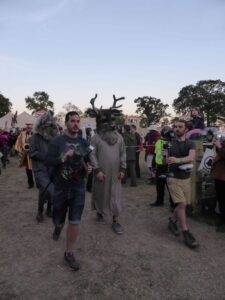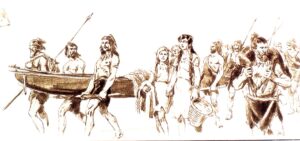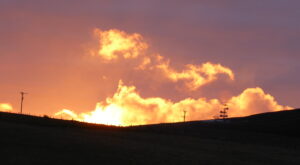
I’m working up a paper about the drowning of Doggerland. I’m amazed by the way in which this is described in highly emotive language by archaeological academics. To coin a phrase the ‘tags’ are all negative: devastating; killing zones; abandonment; vulnerability; increased tensions; disaster; instability; risk; stress, I have deliberately avoided assigning word to author.
At its height, at the end of the last great Ice Age, Doggerland comprised a considerable landmass and different areas of the terrain are likely to have been used by various hunter-gatherer groups. The inundation that led to the loss of this landscape took place over about six thousand years between c. 10,000 BC and c. 4,000 BC and was one of a suite of palaeoenvironmental changes that occurred at the time. It was not a steady process, at times people would have been well aware of the encroaching seas but at other times, particularly towards the end of the period, the rate of change slowed.
Our evidence suggests that many of the groups who would have been affected made use of the coastal zone and were highly sophisticated in their use of marine resources. The changes to their environment meant a rebalancing of the division between water and land. Groups in the interior may have been less flexible, as may their prey. It is interesting to ask ourselves to what extent these people felt vulnerable, or threatened, by the transitions that were taking place.
I think it unlikely that they did. Given the fact that these societies were living through a long period of environmental change, instability was their norm. They had many strategies for flexibility built into their annual lifeways and they were well equipped to survive. Low density populations; inherent mobility; sophisticated understanding of the world around them, including the coastal and marine environment; social adaptability: all of these equipped people to live in this changing world. Of course there would always be individual problems and disasters such as a particularly harsh winter, or the tsunami set off by the Storegga Slide around 6200 BC, but my interest lies in their response to the long-term transformation.
Which leaves me wondering – why the emotional reaction today to the drowning of Doggerland? Could it have more to do with our own fears? We are more populous and less flexible than our ancestors and we are very preoccupied with climate change, in particular sea-level rise and the loss of dry land. A millennia or so of perceived stable conditions have made us complacent about our lifestyle and we are suddenly worried that we may not be able to continue into the future in the way to which we have become accustomed.
It seems to me that the general theme, that surviving the loss of Doggerland must have been problematic, may relate more to our present times than to the peoples of the Mesolithic. This has been discussed in an interesting paper by Karla de Roest which is available online here and at other sites.
Whatever: Doggerland is now part of our national consciousness, depicted in a great poem by Jo Bell.





You must be logged in to post a comment.